History: Grandfather of Kenneth Asa Barton. Married to Sarah Esther West. Originally from Lebanon, Saint Clair County, Illinois. Later moved to Utah.
Data Source: Sons of the Utah Pioneers -- Ancestor Histories, Salt Lake City Chapter.)
William Barton Born 30 January 1821 at Lebanon, St. Clair County, Illinois. Entered Salt Lake Valley September 1851.
William Barton, originally from Lebanon, St. Clair County, Illinois, was born to John Barton of Orange County, North Carolina, and Sally Penn of Elbert County, Georgia, on January 30, 1821. The oldest boy and the second child in a family of ten, he had four brothers and five sisters. Elizabeth was the oldest child. John Wesley, one of William's brothers, died when he was eighteen years old. Elizabeth Sarah Penn and Eliza Ann lived less than five years each and were buried in the Barton cemetery in Lebanon.
The parents of this family were farm folk and, having a large family to support, were far from wealthy. When Wilford Woodruff taught them the gospel, they accepted it,and both were baptized 8 March 1835. In spite of the fact that other members of the family were old enough to be baptized at the same time, they waited until later to accept the ordinances. William was baptized in January of 1841.
Because he was the oldest boy, and because John Wesley, who was two years younger,was a sickly child, William had to learn at an early age to be very responsible.His mother depended on him a great deal. William learned the flour-milling trade in Lebanon and became a millwright as well.
William could read, write, and work figures very well; thus it is likely that he had whatever education was available.
William Barton was chosen to serve as a bodyguard to Joseph Smith and was probably in Nauvoo for that reason only. During those early days in Nauvoo and the surrounding country, when the mobocrats were determined to annihilate Joseph and Hyrum Smith and all of Joseph's followers, it was imperative that the Prophet's bodyguards be men of stalwart character with great physical as well as emotional strength--men who could demonstrate endless courage during times of stress. Integrity combined with a deep abiding faith and love for their Prophet was a characteristic necessary in those chosen to protect him. William Barton was this kind of man.
Both William and his uncle Asa Barton were in Nauvoo 10 July 1844, about 13 days after the martyrdom of Joseph and Hyrum Smith. In a letter he wrote "to William Barton and Asa Barton and all the rest," John Barton, William's father comments on the murder of Joseph and Hyrum.
 Sarah Esther West was born 8 November 1829, in Chalk Level Township, Benton County,Tennessee. She was the first child of Samuel Walker and Margaret Cooper West."The Wests were an ancient family of Knightly Rank, connected by descent and ties of marriage with royal lineage and other families of peerage. They were the oldest families of landed gentry throughout the Kingdom of Great Britain."
Sarah Esther West was born 8 November 1829, in Chalk Level Township, Benton County,Tennessee. She was the first child of Samuel Walker and Margaret Cooper West."The Wests were an ancient family of Knightly Rank, connected by descent and ties of marriage with royal lineage and other families of peerage. They were the oldest families of landed gentry throughout the Kingdom of Great Britain."At the time of her birth, Sarah Esther's parents were living on a 1,000-acre estate inherited by Margaret's maternal grandmother, Esther Fletcher, from her (Mrs. Fletcher's)uncle William's estate. Chalk Level, Benton County, Tennessee, does not now exist, but the burial place of Margaret Cooper's father and mother in Montgomery is still intact. Benton County is southwest of this place. This would be less than twenty miles northwest of Nashville.
Esther's mother and father joined the Church of Jesus Christ of Latter-day Saints at Chalk Level in 1835, after being taught the gospel by David W. Patten and Warren Parrish, two missionary elders. It was also while Esther was living on this plantation in Tennessee with her folks that she first came to know George A. Smith, and the Prophet Joseph Smith's brother, Don Carlos. Little did she realize that some years later George A. would become one of her brothers-in-law.
It was now summer and Esther was feeling carefree and happy. Esther's parents were discussing the gospel with David Patten, Warren Parrish, Wilford Woodruff, and several other men. Her brother John, who had been chasing a squirrel for hours, bounded into the house and announced that their Methodist minister was coming.The man was already at the door, and without even removing his hat or knocking, he entered the house. "Here, you men! I have a warrant for your arrest! Don't move!"
John and Esther, being the two oldest children, realized something of a very serious nature was going on. Their mother looked more tired than usual when she told them,"He wants to hurt our missionaries, and he wants to hurt us all. We must pray."
The next morning Esther's father told the children that the Methodist minister was accusing David Patten, Warren Parrish, and Wilford Woodruff of doing all kinds of evil things. "One is that they have baptized four persons, and have promised them the Holy Ghost." John asked, "Is that wrong?" "No, my son, and as you grow older,you will find this gift has been promised and shall follow baptism. When you are confirmed, if you will listen, you will hear the words receive the Holy Ghost."
Later, Esther's father said that the men did not arrest Wilford Woodruff because he lived in another country. Elder Woodruff had borrowed one of the West's horses to ride while doing his proselyting, and Esther and John were worried about getting their horse back. Their horse was never returned, because while Elder Woodruff was using him, the horse was poisoned and died.
Esther's grandfather West had died, and her grandmother, Sally Walker West, was lonely. She and her uncle had been urging Esther's family to move to Kentucky. At last everything was loaded, and Esther, along with the rest of the family, was seated in the nicest covered wagon they owned. Their long journey began. The Wests reached Kentucky safely.
Letters came from the West's old friends who had moved into Missouri and into the town of Far West. They told of the terrible mobbings -- and how the whole town had been surrounded and two of the brethren had been murdered, one of whom was their old friend David W. Patten who was shot at the battle at Crooked River.
Esther and her family could have been forever happy in Kentucky. They had plenty of food and warmth, and the family relationships were congenial. But a yearning to be close to the Church and its people, to be able to see and to hear their Prophet,and to be able to be reared in that environment, seemed the most important thing in all the world to them.
Again their wagons were loaded, and they were on their way. It was the first day of June, 1842, that Esther and her family bid farewell to Kentucky and their dear ones.When the West family neared the end of their journey, Esther was in awe of the vast expanse of the mississippi River. And the city of Nauvoo -- how fast it was growing.
Now it was July of 1842. A soft breeze was gently blowing Esther's shining dark auburn locks across her soft cheeks, pink now from the excitement of her meeting with a dark handsome stranger of Nauvoo. As William looked at her, a warm gentle look came into his dark brown steady gaze, and one could read in his eyes that he felt he had now found the girl with whom he desired to share the rest of his life. These two people immediately began their romance.
William helped in the burial of his beloved Prophet, tears streaming down his cheeks,and Esther helped comfort Emma, Joseph's widow, with whom she later became close friends. Tragedy is a great equalizer. They knew that it was now that they must begin in ernest to plan for their arduous trek across the plains to the mountains in the West.
William must have spent considerable time in Nauvoo the next eight months, courting the charming Esther West, because on 26 February 1845, they were married in a ceremony performed by George A. Smith. After they were married, William and Esther made their home in Lebanon where William could be of more help to his ailing father whose greatest desire also was to move with his family to the West. They began in ernest to get together teams, wagons, cattle, and other supplies in hopes of being able to leave within the next two or three years for the mountains in the West. As it has often been spoken of in American history, they referred to "going to the mountains in the West" instead they said they were "going into the wilderness."
In the meantime, on 1 February 1848, William and Esther's first child was born to them -- a boy, whom they named Joseph Alma after their martyred Prophet.
William Barton, Sarah Esther West Barton and a son, Joseph Alma Barton, left Lebanon, Illinois, for Utah in the late summer of 1850. They were almost three months crossing the plains by ox team. They remained in Salt Lake until the early spring of 1851, arriving in Parowan April the seventh or eighth.
William's father, John, told them about the time when he saw the "mantle of Joseph" fall on Brigham Young that day in the Grove when Sidney Rigdon talked for an hour and a half trying to convince the Saints that he should be their next prophet.Sidney had forgotten that when the head of the Church was lost, the next quorum in authority was the one to lead. John was only fourteen years old when he and some other boys were near the bowery listening to several men besides Sidney Rigdonspeak. Then Brigham Young arose, and all saw in a moment that he was the man, for his very voice, his gestures, and his attitude were those of the Prophet Joseph. A blind woman clasped her hands and shouted, "Has Brother Joseph been raised from the dead?" John said that he and the boys he was with couldn't see very well,and one of the boys said, "Listen! That is the Prophet speaking! We got up on the hubs of the wagon wheels so we could see better, and we could see that it was Brigham Young who at that moment looked and sounded just like Joseph."
It was in 1853 and 1854 that the first flour burr mill in Iron County was built. It was constructed by William and Nelson Hollingshead and owned by George A. Smithand John Calvin Lazell Smith. It was operated by William Barton, who was the first grist miller in Iron County. This mill was built just inside the old fort at the southeast corner and was run by water power.
In August of 1853, the Indian War broke out, and all settlers living outside of forts were ordered to move into them for protection.
In the early part of 1855, President Brigham Young went to Iron County and vicinity,and, after making an inspection of the situation, called the first settlers back to Paragonah to make permanent homes.
When spring came, William Barton, with his three brothers, Stephen, Joseph, and Samuel, were among the first men to return to begin preparing the adobes for building the fort.
On 25 June 1856, William and Esther's first daughter was born, and they named her Esther Jane. In the fall of 1856, William and Esther made a trip to Salt Lake and back to Parowan in their covered wagon. This trip had been planned for quite some time. It was a very special occasion, one they had been looking forward to with great anticipation. On November 10 they were sealed to each other for time and eternity in the old Endowment House.
William was a carpenter, a mason, a miller, a violinist, a farmer, a brewer and a stockman. He also served as a dentist when needed.
Because Polygamy was endorsed for church leaders, which William was, he married Mary Williamson, an English emigrant, 28 August 1857. The two families never lived together, but resided in separate towns. William lived with Mary the rest of his life. This was because Esther seemed to be self-sufficient.
The William Barton Family Photo
On 23 November 1923, Mary died peacefully in her home at the age of eighty four. She was buried beside her husband in Parowan. Esther requested to be buried in the Greenville cemetery beside the body of her daughter, Estella. This in no way discounted her love for William, but she simply preferred to remain in the homestead where she had such happy memories with William and the children in their growing-up years.
William and Sarah West Bartons Children:
Joseph Alma Barton 1848 – 1895
William Penn Barton 1853 – 1853
Daniel King Barton 1854 – 1934
Esther Jane Barton 1856 – 1942
John Hunter Barton 1858 – 1934
Stephen Rollins Barton 1860 – 1944
Sarah Estella Barton 1862 – 1896
Rachel Barton 1863 – 1865
Phillip Jackson "Jack" Sr. twin Barton 1864 – 1947
Stonewall Jackson twin Barton 1864 – 1864
Lewis Barton 1867 – 1870
Hugh Jones Barton 1868 – 1946
Lydia Barton 1873 – 1873
















































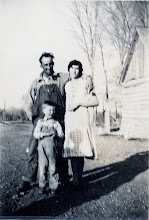

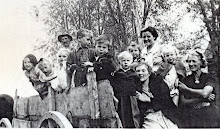
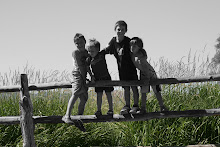
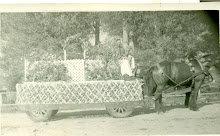
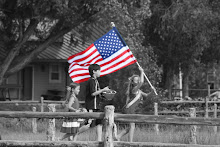
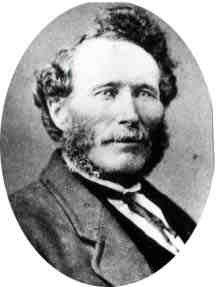
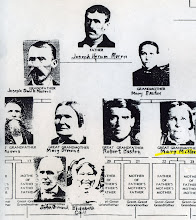
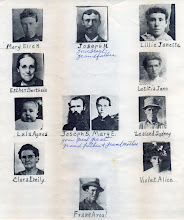
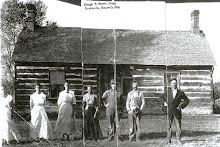
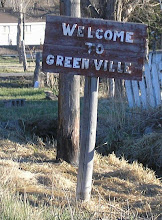
1 comment:
Tammy, what a full and varied family history blog you have put together. I did not know you were related to so many people so close to St. George. It was very interesting and worthwhile to read and look over this collection. And thanks again for your letter regarding my talk. It helped me a lot.
Heber
Post a Comment